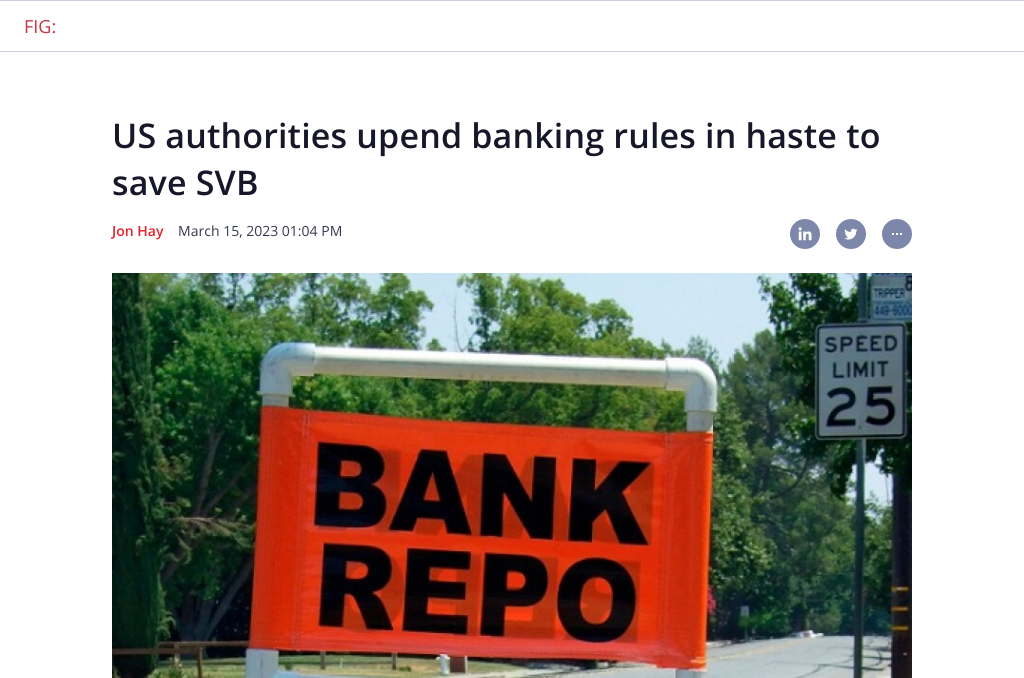In an effort to support bank liquidity, the Federal Reserve, with the support from Treasury of up to $25 billion from the Exchange Stabilization Fund, announced the Bank Term Funding Program (BTFP) to lend against eligible collateral.[0] The BTFP is an additional source of liquidity against high-quality securities, eliminating an institution’s need to quickly sell those securities in times of stress.[1]
JP Morgan strategists have estimated that the BTFP should be able to inject enough reserves into the banking system to reduce reserve scarcity and reverse the tightening that has taken place over the past year.[0] The BTFP will be available to any U.S. federally insured depository institution (including a bank, savings association, or credit union) or U.S. branch or agency of a foreign bank that is eligible for primary credit.[2] Eligible collateral includes any collateral eligible for purchase by the Federal Reserve Banks in open market operations that was owned by the borrower as of March 12, 2023.[3]
The BTFP will provide advances with a term of up to one year and there are no fees associated with the BTFP. The one-year overnight index swap rate plus 10 basis points will be fixed for the duration of the advance and will be determined on the day the advance is made.[4] The collateral valuation will be par value with a margin of 100% of par value.[4] There is no penalty for borrowers who choose to pay off their loan early, or for those who wish to refinance.[4] Loans issued through the BTFP are backed by collateral from the borrower and the borrower is liable for any amount not covered by the collateral.[4]
To prevent potential losses to depositors at Silicon Valley Bank (SVB) and Signature Bank, the agencies invoked the so-called “systemic risk exception.”[5] This allows the Deposit Insurance Fund (DIF) to protect “depositors for more than the insured portion of deposit” if doing so would “avoid or mitigate” the “serious adverse effects on economic conditions or financial stability” that would otherwise occur from winding up a bank in receivership.[2] For the exception to be approved, two-thirds of the Boards of the Federal Reserve and FDIC must vote in favor of it, with an emergency determination by the Secretary of the Treasury, after consulting with the President.[2]
The BTFP is slated to be in operation until March 11, 2024, at the minimum.[2]
0. “Fed May Inject $2 Trillion into US Banking System” BeInCrypto, 16 Mar. 2023, https://beincrypto.com/fed-may-inject-2-trillion-us-banking-system
1. “The forgotten rescue plan that could prevent another SVB-like collapse” CNN, 15 Mar. 2023, https://www.cnn.com/2023/03/15/investing/premarket-stocks-trading/index.html
2. “Treasury, Federal Reserve, and FDIC Take Actions to Protect Bank Depositors and Support Bank Liquidity to Conduct …” WilmerHale, 13 Mar. 2023, https://www.wilmerhale.com/insights/client-alerts/20230313-treasury-federal-reserve-and-fdic-take-actions-to-protect-bank-depositors-and-support-bank-liquidity-to-conduct-operations
3. “U.S. Quasi-Sovereign Wealth Fund Known as the Exchange Stabilization Fund to Provide Backstop for Bank Term Funding Program” Sovereign Wealth Fund Institute, 13 Mar. 2023, https://www.swfinstitute.org/news/96119/u-s-quasi-sovereign-wealth-fund-known-as-the-exchange-stabilization-fund-to-provide-backstop-for-bank-term-funding-program
4. “Recent Bank Failures and Fallouts Addressed by US Agencies” The National Law Review, 15 Mar. 2023, https://www.natlawreview.com/article/us-government-agencies-address-recent-bank-failures-and-fallout
5. “US authorities upend banking rules in haste to save SVB” GlobalCapital, 15 Mar. 2023, https://www.globalcapital.com/article/2beimpcp4cx1trxumsa2o/fig/us-authorities-upend-banking-rules-in-haste-to-save-svb
